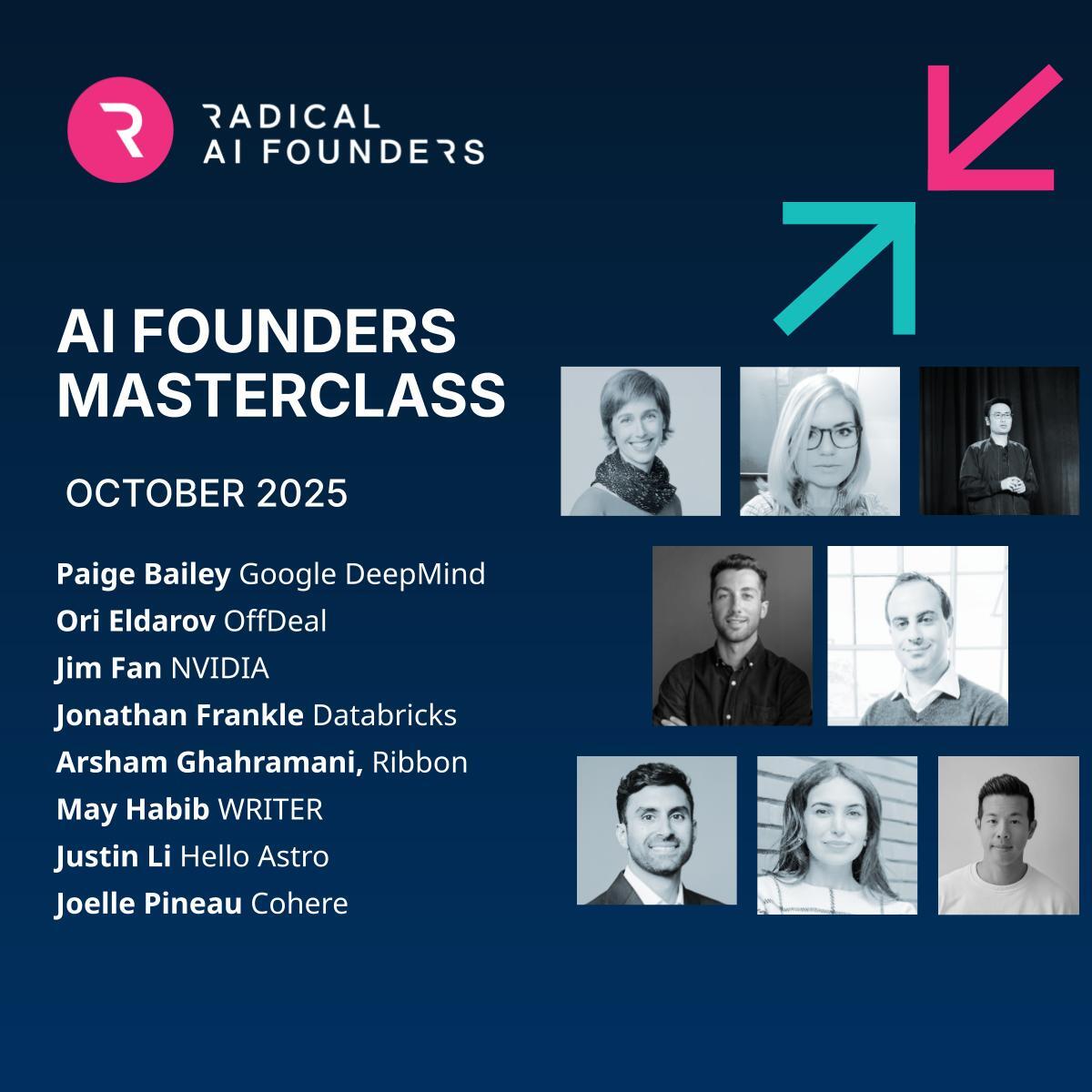In the latest edition of his Forbes column, Rob Toews, a partner at Radical Ventures, delves into the transformative potential of AI agents. These sophisticated AI systems can independently pursue complex goals using online tools and adapt in real-time as they assimilate new information.
This week we share a few key excerpts from Rob’s article:
Tomorrow’s leading AI applications will be agentic at their core. This will be one of the defining themes of artificial intelligence in the years ahead. This leaves the question: what are the most compelling opportunities for startups to pursue in this area today?
One common mental model in the world of early-stage technology is to categorize startups as either infrastructure companies or application companies. In a nutshell, infrastructure companies build the underlying tools and platforms that serve as enablers on top of which application companies build products for end customers.
Conventional wisdom has it that, in any new technology wave, opportunities at the infrastructure layer tend to precede opportunities at the application layer. It makes intuitive sense, after all, that the right infrastructure needs to be in place first in order to support the development of robust, mature, scalable applications. Venture capitalists have long been fond of the “picks and shovels” thesis. (“When everyone is looking for gold, it’s a good time to be in the pick and shovel business,” as Mark Twain famously put it.)
And there is certainly a lot of startup activity happening at the infrastructure layer for agents today. Startups have recently emerged to build tools for agents in areas like orchestration, memory, authentication and hosting.
Yet utilization of all this tooling remains very low, despite the fact that the number of agentic applications has surged in recent months.
In our view, it remains unclear how much space there is to build massive businesses that sit between the foundation model providers on one hand and agentic applications on the other.
Especially at this early stage of the technology’s life cycle, before product architectures have become standardized and interoperable, most of today’s agent-based products are powered by internally built tooling that is coupled tightly with the application. And as the underlying foundation models continue to advance, they will be able to handle more and more of the “heavy lifting” that agentic infrastructure would otherwise be designed to solve for. (Don’t be surprised if GPT-5 is natively agentic in its architecture and capabilities.)
For all of these reasons, we believe the biggest and most attractive market opportunities for agent startups are at the application layer. This is where the action is today.
What general observations can we make about agent startups at the application layer and what makes them successful?
A few brief thoughts.
To begin with, fully horizontal, general-purpose agents do not work reliably. The technology is simply not there yet. In order to build an agentic product that can be deployed in production with customers today, it is essential to limit its degrees of freedom by customizing it for a specific end market or vertical.
End markets that are particularly conducive to being “agentized” (to invent a word) are those that involve structured, repeatable activities. Software engineering, sales development representatives (SDRs) and regulatory compliance are all examples of such functions. Though they involve very different activities, each of these functions consists of routine workflows with consistent patterns that can be learned and audited.
A second characteristic that makes an application area particularly attractive for the deployment of AI agents is the existence of what one might call a “natural human in the loop.”
Agent technology is not yet totally reliable. Edge cases abound. Some degree of human oversight can help make these systems “ready for primetime.” Yet it would be unscalable and uneconomical for an agent startup to employ people to manually check its system’s outputs.
Conveniently, some workflows already include a human who is in a position to review and approve an agent’s actions without much added friction.
Customer support is a good example. In any customer support interaction, there is always a human involved who can review and sign off on any major action: the customer herself. Depending on the system’s design, a human customer support manager can also function as an additional “human in the loop” for an AI agent. These humans’ input can help course-correct the agent and ensure a productive outcome.
It is worth making one final general point about why AI agents represent such a massive market opportunity.
Organizations spend far more on people than they do on software: on average, companies devote about 70% of their budgets to employees, compared to well under 10% for software products.
Agentic applications are such a revolutionary concept because they are not just another software product to enhance worker productivity; rather, they are workers themselves. For certain roles, they can do everything that an employee can do. This means that they will be able to command pricing more in line with an employee’s salary than with a software tool. This unlocks far greater pools of spend than were accessible to earlier generations of technology startups, translating to massive addressable markets.
And indeed, some of today’s leading agent startups are already having success tapping into customers’ hiring budgets as opposed to their IT budgets.
AI News This Week
-
AI startup Hebbia raised $130M at a $700M valuation on $13 million of profitable revenue (TechCrunch)
Radical Ventures portfolio company Hebbia has closed its Series B funding. Founded by George Sivulka, Hebbia specializes in generative AI for document search, providing precise answers by scanning billions of documents of various file types. Hebbia is already deployed at scale at many of the world’s leading asset managers, law firms, banks and Fortune 100 companies.
-
Aidan Gomez helped invent the Transformer at Google. At Cohere, he’s now taking AI to businesses (CNBC)
Aidan Gomez, CEO and Co-founder of Radical Ventures portfolio company Cohere, discusses the company’s focus on generative AI models for business applications. For example, Cohere built a model that enabled an insurance provider to accelerate quote generation and secure more contracts. Customers are demonstrating that adopting targeted AI technologies can speed up processes and provide a competitive edge.
-
Vancouver Company that 3-D Prints Live Tissue for Pancreas, Liver Implants Receives $73-Million (The Globe and Mail)
Radical Ventures portfolio company Aspect Biosystems has received more than $73 million in funding from the Canadian government to build a manufacturing plant capable of producing materials for its clinical trials. Aspect is pioneering the development of bioprinted tissue therapeutics that uses 3-D printers to transform how we treat currently incurable diseases such as diabetes. Its initial focus is synthetic tissues for pancreatic and liver implants. Last year, Aspect inked a partnership worth potentially more than $2.6 billion with Danish biopharma giant Novo Nordisk, marking the largest-ever deal in the bioprinting industry and the largest preclinical deal in Canada.
-
Taiwan Semiconductor Manufacturing Company (TSMC) hits $1 trillion in market value on relentless AI rally (Bloomberg)
TSMC has become the eighth most valuable company globally, overtaking Berkshire Hathaway. This surge underscores TSMC’s significance as the sole supplier for Nvidia. Wall Street remains optimistic despite Taiwan Strait tensions, with major firms raising price targets. Analysts project robust AI accelerator demand, reinforcing TSMC’s strategic importance in the AI market.
-
Research: An Interpretable Deep Learning Framework for Genome-Informed Precision Oncology (Nature)
Researchers have developed a computational framework to improve precision oncology by leveraging genome data. The framework includes a representation-learning component that uses a biologically interpretable deep learning model, and a drug-response prediction component. This method also showed promising results in real patient data, extending precision oncology’s reach to chemotherapy drugs beyond molecularly targeted therapies. This approach marks a significant advancement in using genomic information for effective cancer treatment, improving prediction accuracy and broadening the applicability of precision oncology.
Radical Reads is edited by Ebin Tomy (Analyst, Radical Ventures)



